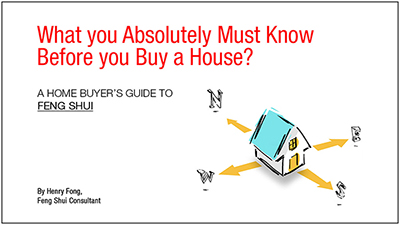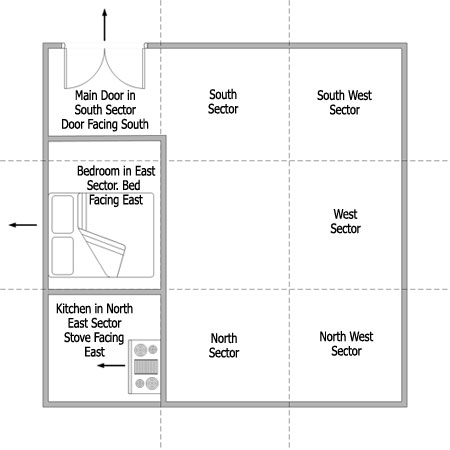I know of two versions of Eight House Feng Shui.
One is based on personal Kua (or Gua) while the other on the house Kua (or Gua). The personal Kua version is very easy to learn and I will attempt to explain to you in this article.
The first step is to measure the facing direction of the house. In this system there are only eight (8) facing directions. It include the four cardinal directions of north, south, east and west and the four inter-cardinal directions of north east, south east, south west and north west. Each direction falls within a 45 degree pie.
Once you have the facing direction, map the nine palaces to the house as shown. In this example the house is facing south.
Next find out the Kua number of the head of the household and breadwinner. This is usually the husband but in these modern times, it may well be the wife! If the kua number is 1, 3, 4 or 9 then he or she belongs to the East Life group. If 2, 6, 7 or 8 then it is the West Life group.
For an East Life person, the favourable directions and sectors are north, south, east and south east. And for a West Life person, they are north-east, south west, west and Northwest.
In this example let’s assume that the head of the household and breadwinner is the husband and he belongs to the East Life Group.
Like most other Feng Shui system, the emphasis is to locate the main door and master bedroom in auspicious sectors and corrected oriented. However unlike other system, this Eight House Feng Shui system requires the kitchen to be located in an inauspicious sector but orientated to face an auspicious direction.
Since the husband is an East Life Group person his main door and master bedroom should be in his favourable or auspicious sectors which are north, south, east or south east. His kitchen (or rather the stove) should be in his unfavourable sector of north-east, south-west, west or north-west.
In the first option, I have place the main door in the south sector (one of his favourable sector). The main door faces south (also one of his favourable directions). I have placed the master bedroom in the south east sector (favourable sector) with the bed facing south (favourable direction). Finally I have located his kitchen in the north-east (his unfavourable sector) but with the stove facing south (favourable direction).
In the second option, the main door is in the south east (favorable sector) while the main door faces south (favorable direction). The bedroom is in the east (favorable sector) while the bed faces east (favorable direction). Finally the kitchen is in the north-west (unfavorable sector) while the stove faces east (favorable direction).
Both the options are favourable for an East Life person.
What if the children are from the west group? Not a problem. Simply try to locate them in a bedroom located in the north-east, south-west, west or north-west sectors.
But what if the wife is from the west group? Put her in a different room? Nope. She simply has the share the same bedroom and bed with the husband. At least this is how it was practice in the old days!
I must caution that while most schools of Feng Shui place the same emphasis on the main door, master bedroom and kitchen, the method that they use and the recommendations may be different. What I have described above is correct for this system whose foundation is the Ba Gua. Other systems have their foundation on others such the Lo Shu and are likely to yield different recommendations.
So if a consultant suggests that you – say an East person – sleeps in a room located in the west, it does not mean he is wrong. Please remember this! Different systems are founded on different principles. At the end its whether they yield the right results or not!












